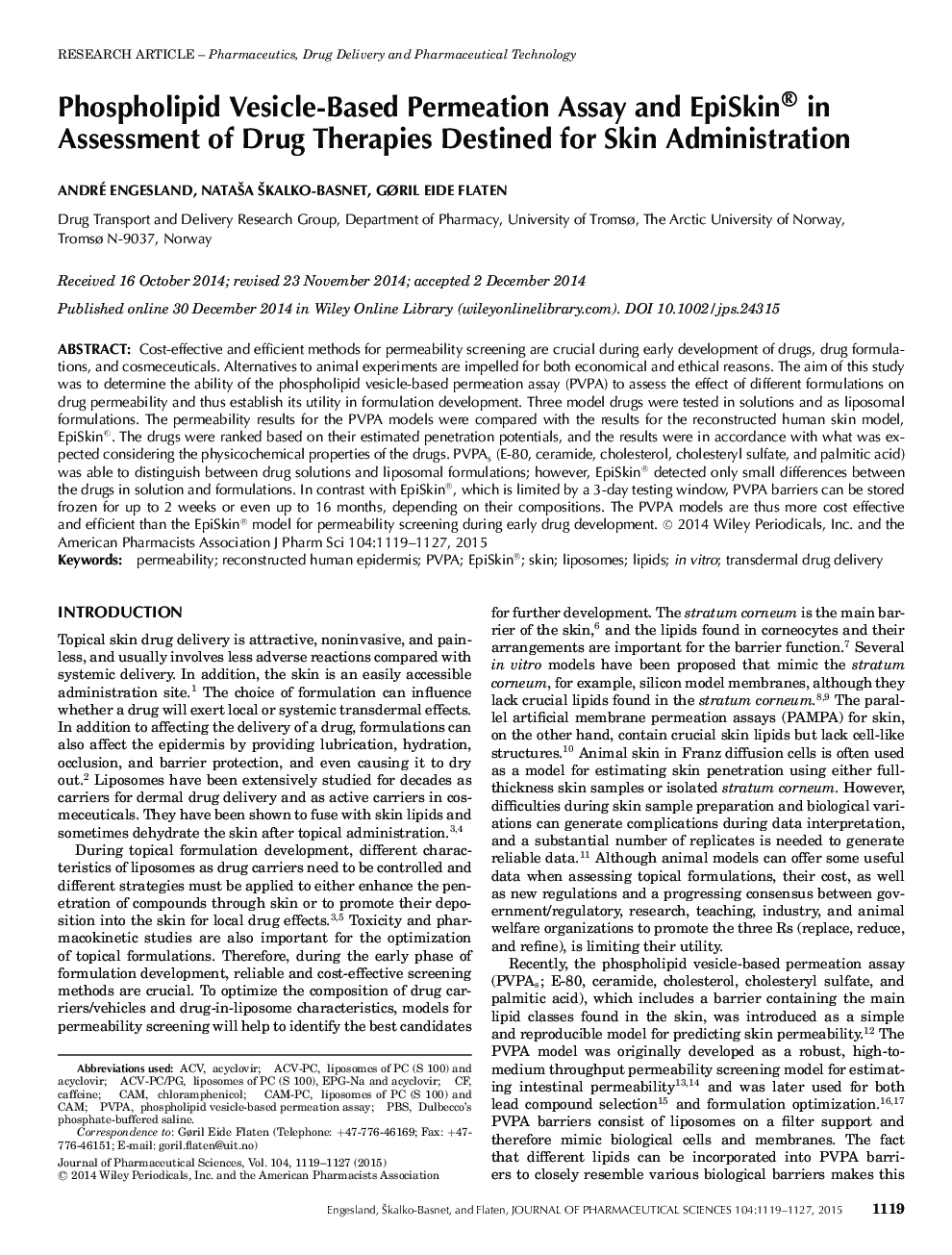| کد مقاله | کد نشریه | سال انتشار | مقاله انگلیسی | نسخه تمام متن |
|---|---|---|---|---|
| 10162070 | 1114315 | 2015 | 9 صفحه PDF | دانلود رایگان |
عنوان انگلیسی مقاله ISI
Phospholipid Vesicle-Based Permeation Assay and EpiSkin® in Assessment of Drug Therapies Destined for Skin Administration
دانلود مقاله + سفارش ترجمه
دانلود مقاله ISI انگلیسی
رایگان برای ایرانیان
کلمات کلیدی
موضوعات مرتبط
علوم پزشکی و سلامت
داروسازی، سم شناسی و علوم دارویی
اکتشاف دارویی
پیش نمایش صفحه اول مقاله

چکیده انگلیسی
Cost-effective and efficient methods for permeability screening are crucial during early development of drugs, drug formulations, and cosmeceuticals. Alternatives to animal experiments are impelled for both economical and ethical reasons. The aim of this study was to determine the ability of the phospholipid vesicle-based permeation assay (PVPA) to assess the effect of different formulations on drug permeability and thus establish its utility in formulation development. Three model drugs were tested in solutions and as liposomal formulations. The permeability results for the PVPA models were compared with the results for the reconstructed human skin model, EpiSkin®. The drugs were ranked based on their estimated penetration potentials, and the results were in accordance with what was expected considering the physicochemical properties of the drugs. PVPAs (E-80, ceramide, cholesterol, cholesteryl sulfate, and palmitic acid) was able to distinguish between drug solutions and liposomal formulations; however, EpiSkin® detected only small differences between the drugs in solution and formulations. In contrast with EpiSkin®, which is limited by a 3-day testing window, PVPA barriers can be stored frozen for up to 2Â weeks or even up to 16Â months, depending on their compositions. The PVPA models are thus more cost effective and efficient than the EpiSkin® model for permeability screening during early drug development. © 2014 Wiley Periodicals, Inc. and the American Pharmacists Association.
ناشر
Database: Elsevier - ScienceDirect (ساینس دایرکت)
Journal: Journal of Pharmaceutical Sciences - Volume 104, Issue 3, March 2015, Pages 1119-1127
Journal: Journal of Pharmaceutical Sciences - Volume 104, Issue 3, March 2015, Pages 1119-1127
نویسندگان
André Engesland, NataÅ¡a Å kalko-Basnet, Gøril Eide Flaten,